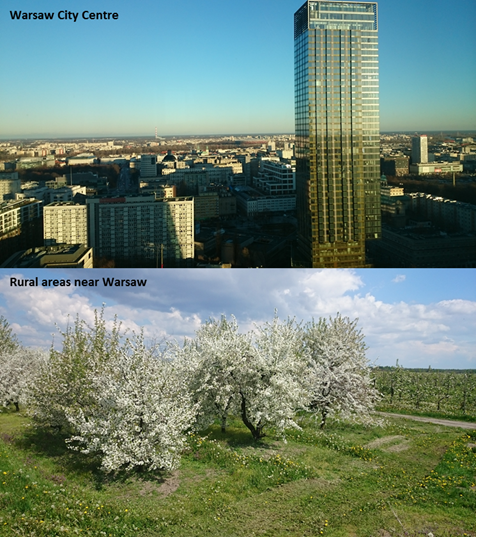
Uploaded on 2017-01-07 by Jan Kowalczyk
Which are the main UHI effects that you can identify in your area? Warsaw is the capital of Poland and the biggest city in the country. As all large cities, Warsaw has a problem with heat island. This matter is much more serious because Warsaw is surrounded by other cities at all its borders and closest rural areas are at least 40 km away from the city centre. In the years 2011-2012 UHI accounted for 2-2.5 Celsius degrees of temperature difference between the central districts and outskirts of Warsaw. This difference was higher during summer (up to 3.5 degrees) while during winter months the difference is much smaller but the range of UHI is significantly bigger. For example the difference between temperature measured by sensors in the direct centre of Warsaw (Twarda Street) and the peripheral district Okecie was as low as 1.2 degrees during winter and up to 2.9 degrees during summer. Which are the measures you would propose? In my opinion the most relevant decisions that could be made are following: • Keeping vacant areas in the central part of the city; • Planting trees along the streets to provide shadow; • Preservation of existing green areas within the city especially tall trees as well as including new green areas in city development projects especially in residential areas; • Using modern technologies to design green surfaces (roofs and walls); • Placing buildings in a way that limits the effects of wind tunnels but still provides for air circulation; • Using bright colours for building elevations; • Replacing full walls around the residential areas with light fences. Is UHI effect concerning policy making in your area? Research and analysis is conducted by academic institutions and the city authorities are aware of the importance of the UHI phenomenon. However, this awareness doesn’t yet translate to any particular activities or strategies